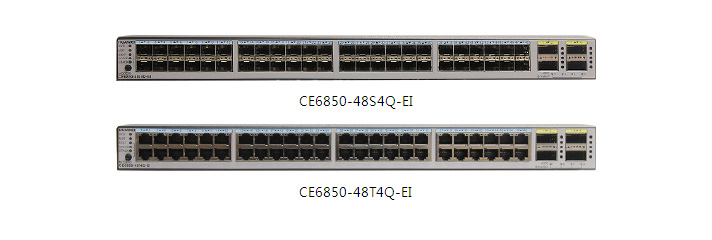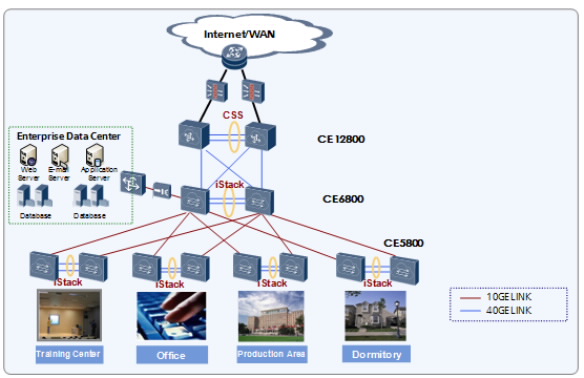CloudEngine 6800 Series Data Center Switches
Huawei CloudEngine 6800 series (CE6800 for short) switches are next-generation 10G Ethernet switches designed for data centers and high-end campus networks. The switches provide high-performance, high-density 10GE ports and low latency. The CE6800 hardware has an advanced architectural design with 40GE uplink ports and the industries highest density of 10GE access ports. Using the Huawei VRP8 software platform, CE6800 switches provide abundant data center service features and high stacking capability. In addition, the air flow direction in ventilation channels (front-to-rear or rear-to-front) can be changed. CE6800 switches can work with CE12800 switches to build a scalable, virtualized and converged fabric, meeting requirements of cloud-computing data centers.
CE6800 has two models: the 48S4Q model providing 10GE optical access ports and the 48T4Q model providing 10GE electrical access ports. Each switch has 48*10GE ports (optical or electrical) and 4*40GE QSFP+ ports (each QSFP+ port can be used as 4*10GE ports). These ports provide L2/L3 line-speed forwarding. CE6800 switches provide high-density 10GE access to help enterprises and carriers build a data center network platform in the cloud computing era. They can also be used as aggregation or core switches on campus networks.





















